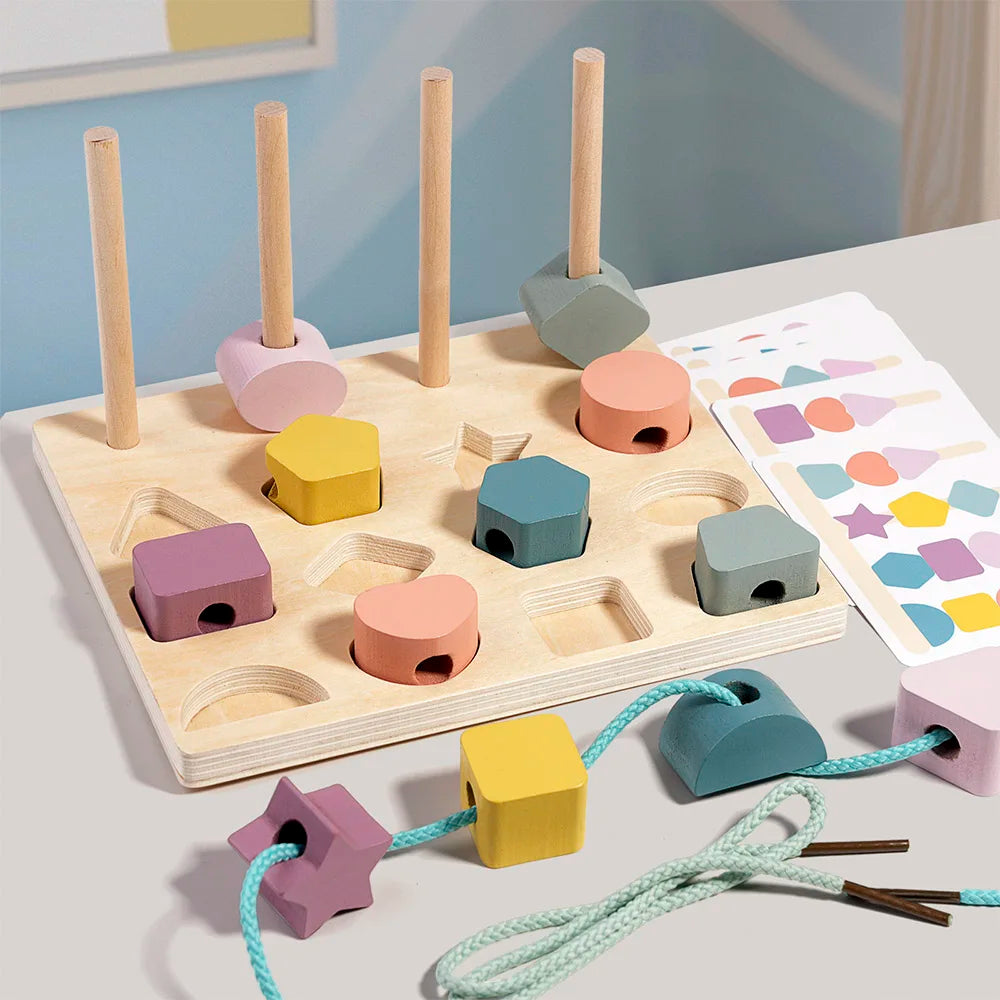
The Lasting Benefits of Wooden Educational Toys for Children
Share
Why Wooden Educational Toys Are Making a Comeback
In recent years, wooden educational toys have experienced a major resurgence. Parents and educators are turning away from fast, flashy, plastic toys and embracing the natural simplicity of wood. Wooden toys encourage children to slow down, explore with curiosity, and learn through play. They provide lasting value, both in durability and developmental benefits, making them a favorite for families who want quality over quantity.
Encouraging Creativity and Imagination
Unlike electronic toys that often dictate how a child should play, wooden educational toys allow for open-ended exploration. Building blocks, stacking towers, and wooden figurines leave space for children to imagine their own stories. This type of play nurtures creativity and encourages children to become independent thinkers. The absence of sound effects or screens means children must rely on their own imagination—turning a set of wooden blocks into a castle, a farm, or even a rocket ship.
Developing Fine Motor Skills and Coordination
Wooden educational toys are also excellent tools for building essential motor skills. Toys such as shape sorters, puzzles, and balancing games help children strengthen their hand-eye coordination and fine motor control. Each time a child picks up a wooden puzzle piece or stacks a block, they are practicing focus, patience, and precision. These skills are vital for later tasks such as writing, drawing, and problem-solving in school.
Eco-Friendly and Safe for Kids
One of the biggest reasons parents prefer wooden educational toys is their eco-friendly nature. Many are crafted from sustainably sourced wood and finished with non-toxic paints and natural oils. Unlike plastic toys, which often break easily and contribute to landfill waste, wooden toys are biodegradable and last much longer. Parents can feel confident that their children are playing with safe, chemical-free toys that are gentle on the environment.
Supporting Early Cognitive Development
Wooden educational toys are designed with learning in mind. From alphabet blocks that teach letters and spelling to counting toys that introduce numbers and math, they offer hands-on ways for children to absorb knowledge. When children sort shapes, count beads, or assemble puzzles, they are strengthening problem-solving skills and building the foundation for academic learning. The tactile nature of wooden toys makes these lessons more memorable and effective.
Social and Emotional Growth Through Play
Play is not only about learning facts and skills—it also helps children develop socially and emotionally. Wooden educational toys encourage cooperative play when shared with siblings, friends, or classmates. Building structures together or solving puzzles as a team fosters communication, patience, and teamwork. Children also build resilience when they make mistakes and try again, learning valuable lessons in persistence and confidence.
Durability and Timeless Appeal
Durability is another reason families choose wooden educational toys. Unlike fragile plastic toys, wooden toys are sturdy and built to last for years. They can withstand drops, rough play, and constant use without losing their charm. Many parents appreciate that wooden toys are timeless classics, often passed down through generations as keepsakes. This longevity makes them a smart, sustainable investment for families who value quality and tradition.
Why Parents Love Wooden Educational Toys
For parents, wooden toys provide peace of mind. They are safe, educational, and engaging without the overstimulation caused by screens and electronics. They support eco-conscious values while offering children the opportunity to learn naturally through play. Wooden educational toys blend fun, learning, and sustainability, making them one of the best choices for growing children.
